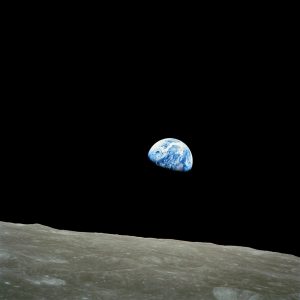NASA is warning people not to watch the so-called “planet parade.”
On Monday, June 3, there will be no “parade of the planet” – at least, no one will see it.
NASA has taken the unusual step of debuting a widely distributed news item circulating on the Internet and social media about a planetary alignment next week.
If you’ve read any of the breathless coverage on all sorts of outlets that don’t usually care about the night sky, you could be forgiven for thinking it’s going to be as dramatic as the best northern lights in 21 years: a solar eclipse total or incoming free-eye comet.
Alas, it won’t be.
NASA speaks
“You may have heard of a ‘parade of planets’ on June 3,” said a post from the @NASASolarSystem account on X. “Be aware that most of them will be either too close to the rising Sun or too faint to “was seen.”
As I reported on May 21st, reports are circulating of a June 3rd pre-sunrise alignment of Mercury, Mars, Jupiter, Saturn, Uranus and Neptune.
It is not untrue – there WILL be an alignment of those planets – but four of those planets will be invisible. It also shows a misunderstanding of the term “approximation”.
Rethinking the ‘Alignment’
The solar system is flat and all the planets revolve more or less in the same plane. Think of the solar system as a fried egg; the sun is yellow and the planets each draw circles in white, all going in the same direction.
Now, think about the sun’s path across our sky during the day. Astronomers call this ecliptic, and it’s also where you can always find planets at night. Not in the northern sky or in the extreme south, but always along the ecliptic.
The planets are always aligned. Sometimes, they stack up, but not especially on June 3rd. In fact, the entire pre-dawn panorama of the six planets stretches from the northeast to the southeast sky. This is a large area.
What you WILL Look
Go outside before dawn on June 3 and you’ll see two planets – Saturn and Mars – shining rather faintly generally around the east-southeast. This is!
Uranus and Neptune are too small and faint to see with anything but high-powered telescopes—especially in the predawn light—and Jupiter and Mercury will be lost in the sun’s glare.
“Look for reddish Mars between Saturn and the thin crescent,” says NASA in its tweet. A 12% waning crescent moon will shine near Mars, but there’s no reason to get up on Monday, June 3 just for that. Every morning between now and Tuesday, June 4, a waning crescent moon can be seen with Mars and Saturn.
As astronomical sights go, a waning crescent moon and some faint planets are nice. But it is not nice to “wake up the nation”.
Stay in bed and save yourself for the next “solar superstorm” for the northern lights, or the next total solar eclipse.
Follow me Twitter/X AND Instagram.
Take my three books Stargazing in 2024, A stargazing program for beginners AND When is the next eclipse?
I wish you clear skies and open eyes.
#NASA #warns #public #ignore #Parade #Planets #hoax
Image Source : www.forbes.com



